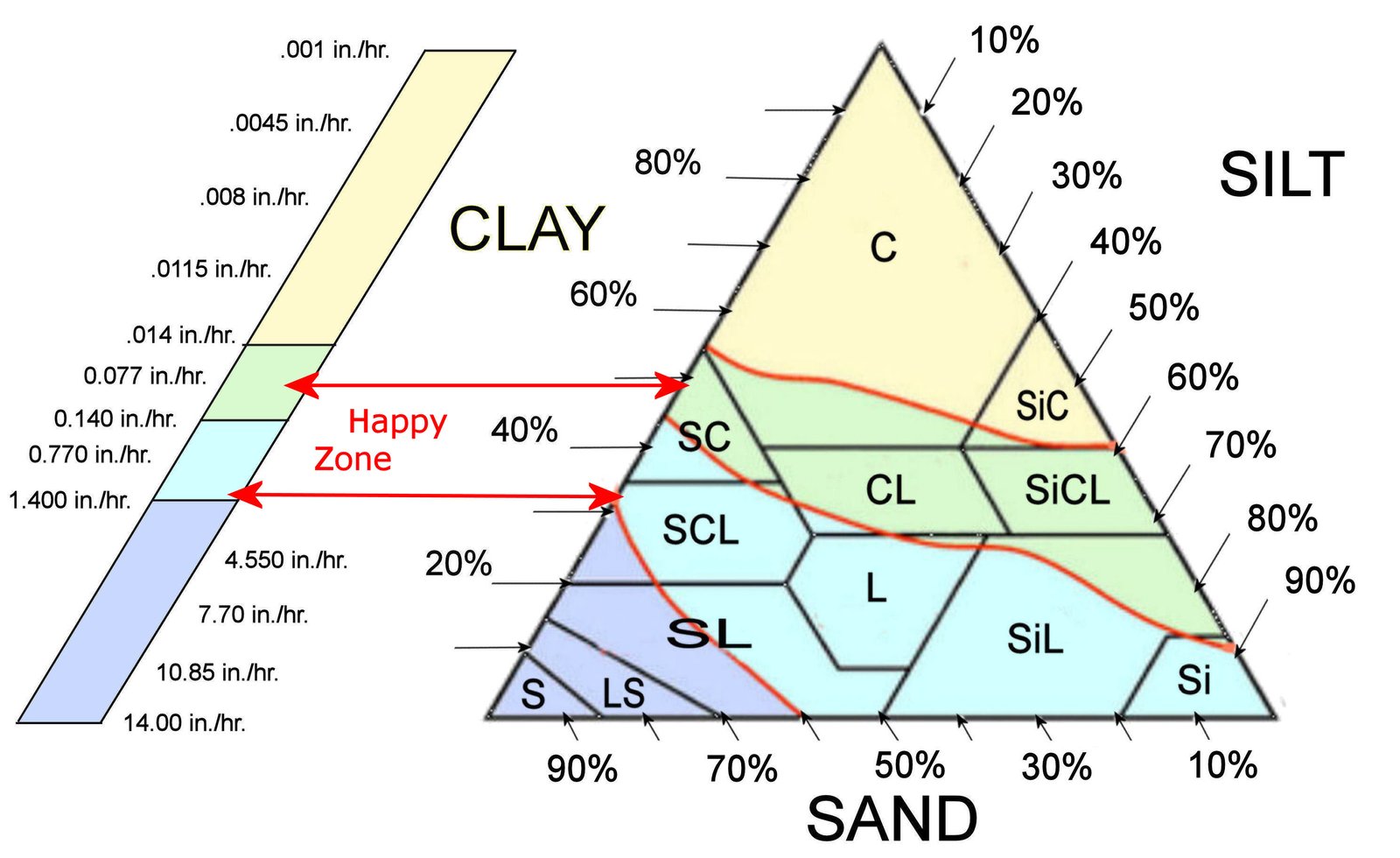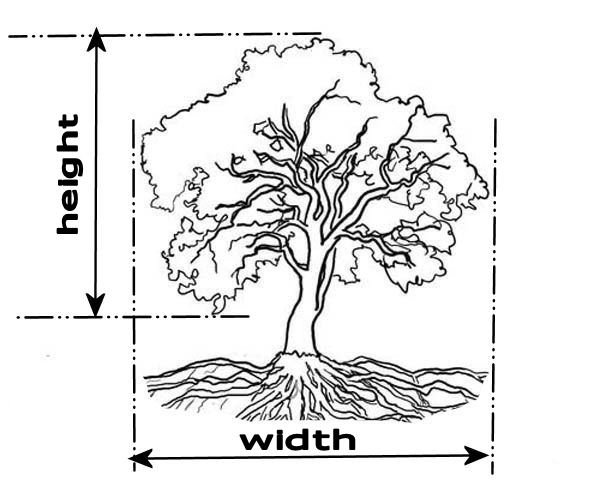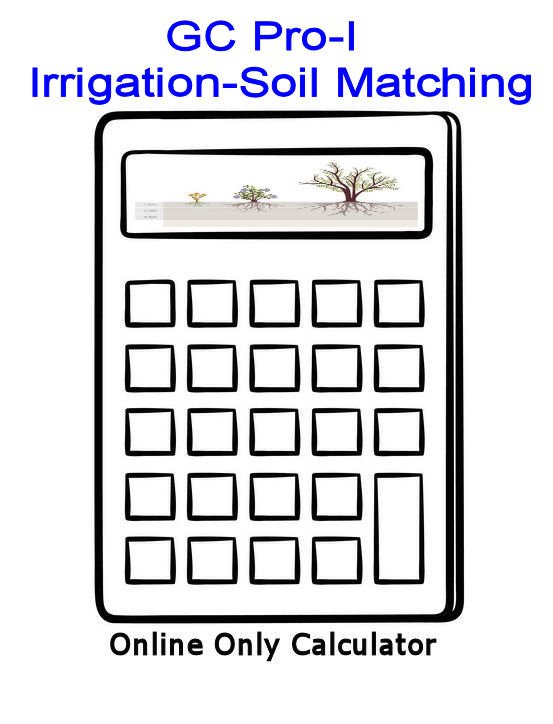
|
Understanding Soil Composition Critical for Success |
Garden Tip TB1482 |
Technical Bulletin Series
|
|
Tolerating drought
and confined irrigation
This Senna artemisioides ssp. filifolia
(formerly Feathery Cassia) is alive and actually
looks similar to how it might look without any
irrigation in a drought prone climate.
Though these are classified as "drought tolerant",
they are negatively affected by undersized root systems.
|

|
|
Look at the difference between these two plants!
|

|
|
Thriving on good distribution and limited deep water
This same genus & species is thriving with proper irrigation
designed for the existing soil composition. You can see how,
even though drought tolerant, they benefit greatly from proper
irrigation that produces large healthy root systems.
|
|
For the vast majority of plants there is a huge difference between those with adequate root systems and those with small inadequate roots. This is their beauty and health! Proper irrigation means much more than being frequently watered! Two critical parameters of a healthy roots system are their depth and spread. It amounts to how many cubic feet of soil is getting adequate moisture to support a root system. A ten minute drip irrigation or providing only a couple emitters is not going to provide the depth or spread needed for a healthy plant. When the soil is hard (high clay) and water movement is therfore very slow it requires not only enough water, but enough time for that water to penetrate. Shallow moisture equals shallow roots - and stressed plants. When water is applied slowly (30 to 90 minutes, or more) it permeates to a greater depth. With hard, slow draining soil this is the only way to obtain deep moisture. Also, when water is applied and distributed through a larger number of emitters, we see a healthy and wide area for those roots. Depth of roots assures the plant will still have moist soil even though the weather has been hot. This also reduces evaporation as it cuts water expense. The width or area coverage, when complimented by depth, provides adequate root-soil volume to supply the quantity of moisture and nutrients a plants need. With soil composition that sits in the plant's root "happy zone", irrigation design is simpler. Still the run time and emitter count per square foot needs to match that soil. |
If you really want to have plants that thrive for years, you need to start by knowing the composition of your soil. An example; you know you have hard, clayey soil - so that's all you need to know; Right? There are SIX different types of clay soil? Each one requires a different approach for proper irrigation. |
|
It's not difficult to find out
water movement rate in your soil. |

|
| A simple soil settlement test that takes only about five minutes to complete - and the use of this handy Soil-Test Analyzer will give you the information needed in order to match the irrigation water application rate with the soil's flow rate. |
This triangular chart is the standard for reporting soil
composition categories. Each of the twelve categories is
classified and named, but notice (by comparing to the
water movement chart above) just how much water movement
rate varies even within a singal class. Loam varies from 0.14 in/hr
to 1.2 in/hr (an 850% increase).

The various types of soil composition are identified by their "mix" of the three soil particle size categories; Sand, Silt and Clay. To think you have "DG" (decomposed granite) specifies the mineral type but does not address the particle size and permeation rate. |
|
There are 12 identified types of soil composition in the Soil Triangle,
and parts of 7 of those class types are within the "Happy Zone" for plant root systems.
To know how to match soil and irrigation rate, a settlement test and subsequent analysis is needed. To ignore this is water waste and plant stress. Roots will not grow into dry soil. Additionally; if soil has been allowed to become depleted of sufficient moisture, the root systems that had been growing in that soil will soon perish. |
|
Growing Healthy Plants Is really a simple science Soil Composition in Desert Climates The "natural" process in the evolution of soil composition is for clay to rise to the top and sand (large particles) to penetrate more deeply. In regions of the Country where there is little rainfall there are few plants and not much in the aspect of root creation. Also, this soil becomes devoid of microbes and does not easily change state of composition. If sandy, it tends to remain sandy, and if clayey, tends to remain hard and high clay. If you live in an arid part of the country, your soil is likely high clay. You can NOT assume this however. Soil composition testing is not rocket science, but actually knowing the type of Native soil in your landscape will improve your chances of success ten times over! |
|
In climates where rainfall is sufficient (30 inches per year or more and consistent year-round), slow draining soil is much less of a problem as rainfall is typically applied very slowly and the moisture has a chance to penetrate to a deeper level. Still here, very high clay is a real problem for many plant types. In desert type climates; high levels of clay are often encountered. There are many varieties of clayey soil types (see soil triangle above), but one thing most all have in common is poor drainage. This is a real challenge to the development of new roots. When improperly irrigated the soil will not have sufficient oxygen, and plant roots suffer or die. |
|
Native Soil is the term used for the
Soil you have to start with Amended Soil is what you have after mixing in a formula of other Soil Media Materials |
|
Hard packed, high clay soil (poor composition) does not provide much of an opportunity for roots to grow and spread. This is simply because the moisture will not permeate throughout the soil area. The best way to create larger healthy root systems for new plants is to dig large enough holes and then PROPERLY AMEND the soil that goes around the new root ball. |

When roots are shallow soil dries quickly and the plant easily wilts! |

|
|
Different types of shrubs and trees can thrive with various ratios
of root system to canopy. You will often hear that roots should extend
to the dripline (or "width") of the tree, yet drought tolerant plants
can still thrive with a smaller ratio. This difference is factored into the Garden Calculator Pro I.
|
|
Though occurring less often, soils with very high sand ratios can also be a problem. In these soils, water and nutrients quickly leach away from the plant roots and wilting or nutrient deficiencies are likely. In each case, soil amendments are vital to correct the problem, and the formula for these amendments is vastly different. |
|
In drought prone climates, during that time of year when rain is absent the only moisture is that applied by irrigation. Very few landscapes can schedule the irrigation to run for six or more hours (as is often the case with rainfall), and so depth of moisture becomes a major issue for root systems. Understanding this concept is vital towards having a healthy plant palette in desert and drought prone regions! |
|
When your plants are growing in "Happy Zone" soil type, it is easy
to schedule irrigation that will permeate deeply and give you the
successful landscape that you desire. Still the permeation rate
within this favorable zone of soil composition varies considerably.
The Garden Calculator Pro I will provide the necessary details for
setting up this irrigation in a way that will achieve this.
|
|
Soil Amendment Formulas differ Greatly
based on Native Soil Type Compost - Planting Mix - Potting Soil - Perlite - Sand Various combinations of these amendments, when mixed in with your native soil will make a "new soil composition" that provides the characteristics needed for success. To skimp on Amendments and hole size invites plant stress & failure! |

|
|
The Garden Calculator Pro-I provides complete and accurate soil amendment formulas based on input from a simple soil test the user provides. Not unusual, where the Native soil is very poor, most of that native will not be re-used in the planting hole. The proportions of native and the various amendments are specified for each planting analyzed. No guesswork involved and a complex analysis is conducted instantly. Additionally, this online calculator will provide specifications for the irrigation required. |
Additional Information on these pages
|
When trees or large shrubs begin to show signs of stress indicating their root growth is being restricted, there are two techniques to consider for remediating this: Radial Trenching and Vertical Mulching! To understand these techniques; visit TB1483 "Bad Soil Remediation". |
|
Being successful when installing new plants into your landscape actually involves several important considerations. In this Garden Tip the concept is Understanding How Vital Good Soil Composition is. Even if you have really good soil that doesn't drain too fast and yet doesn't drain slowly, extra organic matter (that comes from compost or planting mix) provides the food for soil bacteria to establish and grow. Living soil is one of the "keys" to success in the garden. To better understand how to AMEND the soil for your new plant; visit TB1481 "Critical Aspects for Soil Composition". |
